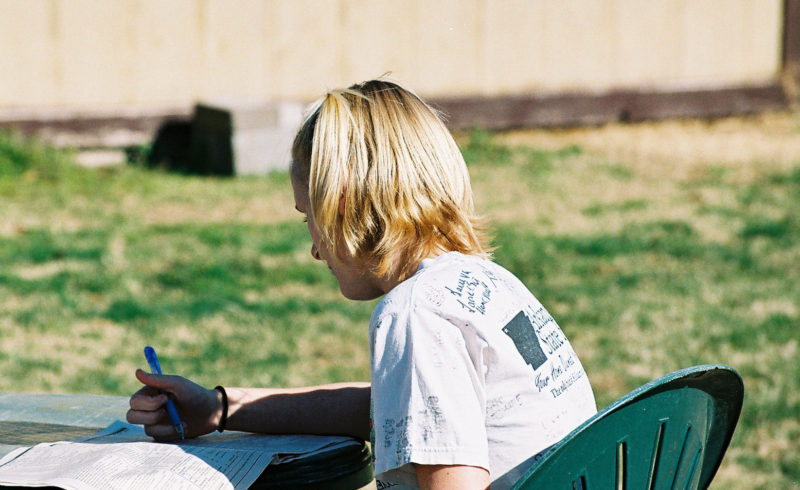
You picnic outdoors, play outdoors, explore outdoors – why not have your student study outdoors? Studies have shown that time outside can improve concentration, focus, and memory. Plus, the sunlight will also help put your student in a better mood.
Below are a few steps you can take to get your student started:
- Decide what homework can be completed outside. While it’s difficult to work on a computer outdoors (the glare on the screen can make it hard to see), there are many other types of assignments that can be done. Reading a novel or a textbook, doing math problems, or working on a project or art assignment can all be done outside.
- Determine what is needed to complete those tasks. Does your student need a table to work on? A place to sit to read? Easy access to pens, pencils, or paper?
- Consider the possibilities. As you gather the items on your list together, think about the different options available. For example, a place to sit and read might be a porch swing, a hammock, a hammock chair, or a lawn chair. A writing surface can include a picnic table, a patio table, or even a lap desk. (Remember to bring something smooth to write on if the table’s surface is uneven.) Pencils and other supplies can be stored in a portable caddy or plastic box. Together with your student, decide what would make studying outside both convenient and inviting.
- Keep them hydrated. Easy access to a water bottle and snacks will cut down on trips to the kitchen.
- Minimize distractions. No tablets or cell phones allowed in this study space. Keeping the electronics indoors will help your student stay focused on the task at hand. But remember — distractions can be cute and furry, too. If you have pets, consider putting them inside while your student is working.
Photo by taliesin










